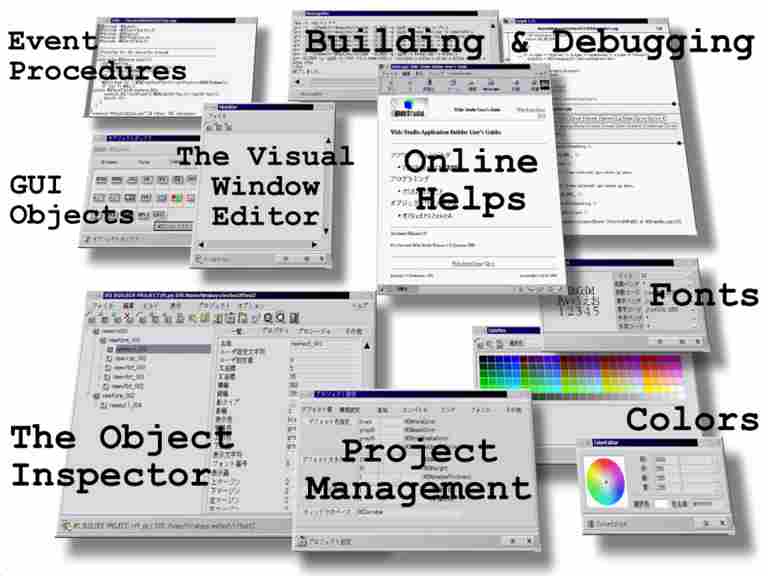 |
||
| WideStudio Application Builder User's Guide | ||
|---|---|---|
What is the WideStudio?WideStudio is a GUI based application development environment which has been developed purely in Japan, on many platforms such as Windows, Linux, FreeBSD, and Solaris. This application is fully available and is "open source". This is one of its most outstanding features. Everyone can use this to develop open and multi-platform applications with ease.WideStudio has the following characteristics:
I have also developed various applications by saving money, getting a palm-top computer, inserting the machine language on it by drawing dots to make a so called game, but that is an old story. Since then, I used MS-DOS followed by Windows 3.0, then 3.1, UNIX/X11 Window system, Xt/Motif, Windows95/NT(Win32), MFC/ActiveX. At last, I don't want to bother anymore with incompatibility between platforms and have decided to make my applications platform-independent. I thought it be great if developers could build applications by only using a mouse with the WideStudio IDE. The next figure describes the composition of WideStudio and its files. 
[WideStudio Composition] What is the C++ language?WideStudio is written in C++. C++ is basically the C programming language, with enhanced support for object oriented programming.C is the one of the most standard programming languages, and is used in many larger software products because of its hardware accessing ability. C++ inherits many features from the C language, and is equipped with functions to allow developers to build applications more efficiently. While it copies C format, it soon becomes apparent that it is a world apart from C, and tends to get both novice and experienced programmers into difficulty. Using WideStudio, developers can write programs as they did in C, and they are still able to make good use of great C++ functionalities, and of course, programs using classes are also easy to make. Comments on the development of the WideStudioThere are thousands of application builders like WideStudio, so why use WideStudio?I have often heard "I want to make some applications, but it's hard...", or "I don't want to buy a shit application builder and pay money for it!" and they cannot take up programming. WideStudio solves these problems. It's free, and so easy to use! I also often hear "What the hell is open source?" and "Why is the WideStudio free?" One of the objectives of developing WideStudio is to contribute it to the open source world. WideStudio was made in a restricted time frame to see how efficiently it could be built / designed. I would appreciate if any part of this source would be helpful for developers in developing or designing software from now. From nuts and bolts to real applications, it will be a huge delight if everyone shares enthusiasm in developing through engineering.
|
||
 |
| Please feel free to contact us for any questions/bugs after checking the mailing list |
|
Copyright©WideStudio Development Team,1999-2005
|